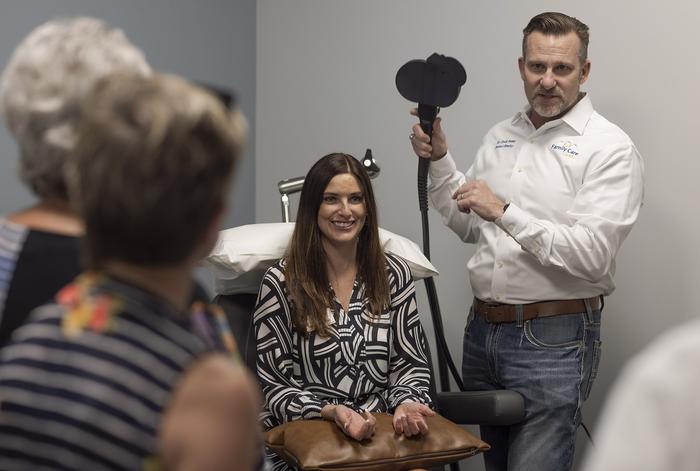
A modified transcranial magnetic stimulation (TMS) treatment led to a profound improvement in patients with hard-to-treat depression in a recent study.
Overall, 66 per cent of patients with major depressive disorder who took part in the study responded to the novel treatment, and 42 per cent showed acute remission.
This is significantly higher than the 29 per cent response rate reported for the standard FDA-approved protocol and also better than the response rates reported for alternative evidence-based protocols.
Study lead Sabrina Segal, Ph.D., Director of Research at Family Care Center, said: “The findings are significant, particularly for patients who have tried other treatments and not seen desired results.
She added: “Our TMS protocol reduced patient symptoms considerably more than other approaches and with virtually no side effects.”
Only 30-50 per cent of patients experience full recovery or remission when treated with psychotherapy or medication.
Even when medications do work, they can sometimes cause side effects ranging from weight gain to sexual dysfunction, and in some cases, can actually exacerbate depression symptoms.
Patients who try several types of therapy unsuccessfully are often considered treatment-resistant, especially those who suffer from major depressive disorder, which is considered the leading cause of disability worldwide, according to the World Health Organization.
Dr Segal said: “This is a global epidemic.
“Simply put, we need more effective treatment options, and that’s where TMS can make an impact.”
During the trial, more than 30 dozen patients underwent TMS to a region in the front left portion of the brain.
The technique is already approved by the FDA for the treatment of major depressive disorder; however, it has only been shown to offer a meaningful reduction in depression symptoms in about 29 per cent of patients.
Charles L. Weber, DO, FASAM, Chief Medical Officer and Founder of Family Care Center, said: “We took that approach a step further.
“What we did was follow up the more traditional stimulation of 15 minutes to the left side of the brain, with three minutes of high frequency, short bursts of stimulation to an area in the right side of the brain.”
He added: “This type of stimulation to the right side has been associated with improvements in symptoms related to anxiety and post-traumatic stress disorder (PTSD).
“A couple of recent studies have demonstrated a reduction in depressive symptoms in older adults; however, this is the first study to show the effectiveness of the right-side stimulation on reduction of depressive symptoms in younger adults.”
The fact that two-thirds patients showed a response to this approach and nearly half had acute remission is made more encouraging by the fact that most patients in this study suffered from other conditions as well, such as anxiety and PTSD.
Dr Segal said: “There is much more research needed in those areas, but given our initial success, we’re optimistic about the potential, particularly given their demographics.”
The researcher added: “We are making huge strides in understanding how TMS works, but we’re still just scratching the surface.
“Hopefully, this could someday become a first-line therapy for millions who suffer from a variety of mental illnesses and spare them the devastating toll they often take on their lives.”
Image: Family Care Center



